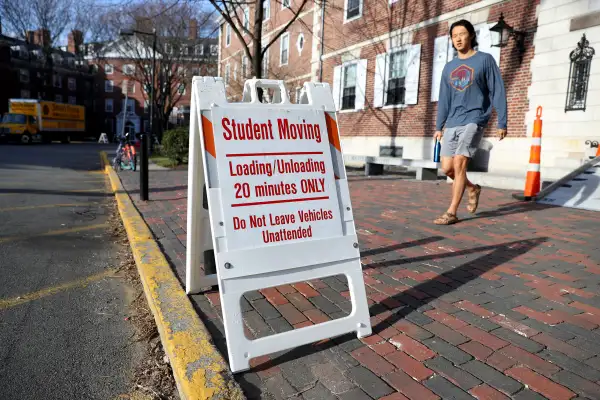The Number of Students Taking Time off From College Doubled Due to Coronavirus

A new report shows that the coronavirus pandemic did not have a significant impact on college students’ enrollment status during the spring term. Even after most colleges and universities switched to remote instruction in March, students’ withdrawal and shift from full-time to part-time were largely consistent with previous years, according to data published today from the National Student Clearinghouse Research Center (NSCRC).
But while overall enrollment patterns remained more or less the same, there was an increase in the number of students who requested a leave of absence, particularly among Black and Hispanic students. In addition, the number of new enrollments reported in April 2020 was down significantly compared to 2018 and 2019.
Doug Shapiro, executive director of the research center, said that while the study’s overall findings showed that most college students were able to stay in school, these are early signs that point to a concerning impact on minority students. Shapiro stressed that the findings for leaves of absence are preliminary and apply to a small number of students.
“We thought we would see more withdrawals and we were surprised that we didn't see more students dropping classes, which would have caused a reduction in status to part time or even lower,” he said.
Several surveys have suggested enrollment may drop this fall, as students stay home for financial reasons or because they don’t want a diminished college experience if coronavirus forces most courses online. Yet the Clearinghouse report is the first national look at how COVID-19 has actually affected enrollment patterns.
Overall, leaves of absence doubled from previous years. Approximately 6,400 students took a leave of absence in spring term out of a total of more than 17 million. Black and Hispanic students saw an increase of 206% and 287%, respectively, compared to a 70% increase for white students and 59% for Asian students. The number of reported leaves of absence were particularly high in Florida, California, Massachusetts and New York.
Shapiro said that the leave of absence data was the only place the research team saw any dramatic difference by race and ethnicity. The findings track with national data that Black and Hispanic communities have been hit hardest by COVID-19.
Students who take formal leaves of absence generally submit a request to their institution to take time off but still intend to re-enroll in a future academic term. That's different from a withdrawal, which indicates a student doesn't plan to immediately re-enroll. As long as a student on leave returns within 6 months, they will not have to start repaying student loans.
The researchers also looked at the number of new enrollments in the spring. In 2018 and 2019, approximately 90,000 new enrollments were reported with a start date in April. In 2020, the number had fallen by more than 80% to 17,000. Those data largely capture students who enroll at institutions on the quarter system, as well online institutions that have rolling start dates.
Normally during an economic downturn, postsecondary enrollment tends to go up in tandem with unemployment. If anything, Shapiro said he expected to see an increase in new enrollments, although it usually takes several months to see the effect. “We would have been surprised to have seen that happen so quickly..., but we certainly didn't expect it to go in completely the opposite direction,” he said.
The report comes amid much speculation about the fall semester. A sizable drop in the number of students enrolling could set back college completion goals and increase the likelihood of significant financial woes among some colleges. Some studies have even suggested that certain institutions might see as much as a 20% enrollment drop. But Shapiro cautioned that the new analysis doesn’t provide much indication of what enrollment might look like in the fall.
“What happened in the spring was such a disruption,” Shapiro said. “I think the fall is a whole different animal in the sense that you've got this interplay of a long period of planning and preparation and people trying to figure out what's happening and making alternative plans as opposed to just reacting in the moment to what seems like a completely unprecedented crisis.”
This article has been updated to clarify that if a leave of absence lasts longer than 6 months, repayment on federal student loans will begin.
More from Money:
What to Know Before You Take a Gap Year From College During Coronavirus
Don't Co-Sign Your Child's Private Student Loan Without Answering These 3 Questions First
Here's How College Admissions Are Changing This Year — and What High School Seniors Need to Know
